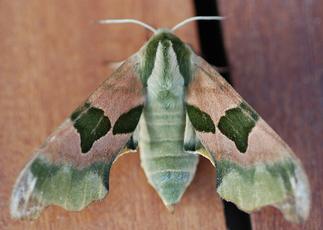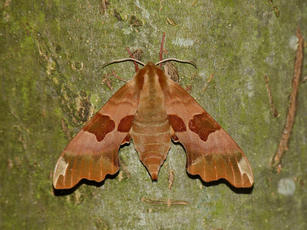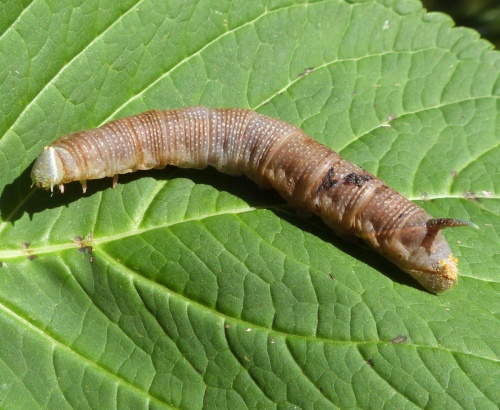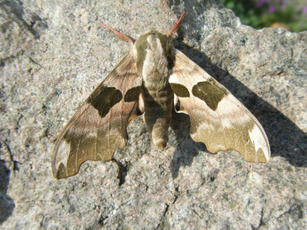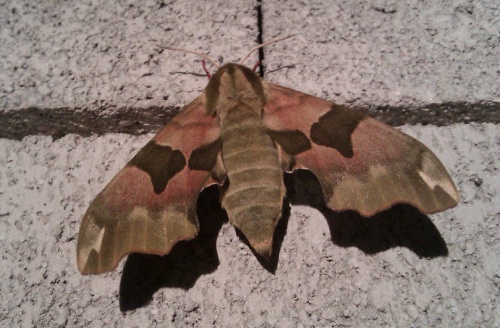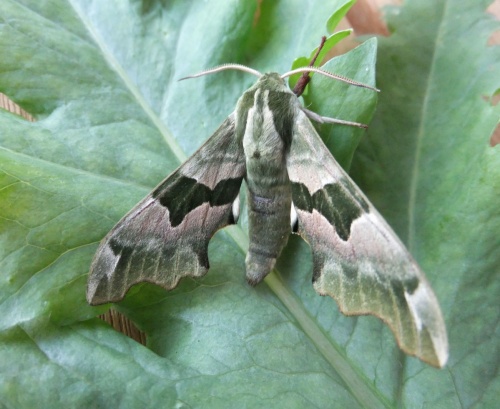Lime Hawk-moth - Mimas tiliae
Wingspan 55-70 mm. It has a distinctive scalloped-edged forewing, subtly coloured in pinkish and green. The central dark band is quite variable in size and extent.
Occupying woodland and suburban habitats.
It flies in May and June, and often comes to light.
The larvae feed on Lime as well as a number of other deciduous trees including Birch, Alder and Elm. They are typically green with yellow stripes and a blue horn at the rear. When ready to pupate, they change colour to a dull greyish or purplish brown and begin to wander, looking for a pupation site. This is when they are most often encountered.
A reasonably common species in the southern half of Britain, it was most frequent in the London area, where there are still extensive tree-lined avenues. In recent years its distribution has spread northwards and is now regularly found well into north Yorkshire and beyond. In a recent survey to determine the status of all macro moths in Britain this species was classified as common.
It is fairly common in Leicestershire and Rutland. L&R Moth Group status = A (common and resident)
Leicestershire & Rutland Map
Enter a town or village to see local records
MAP KEY:
Yellow squares = NBN records (all known data)
Coloured circles = NatureSpot records: 2025+ | 2020-2024 | pre-2020
UK Map
Species profile
- Common names
- Lime Hawk-moth
- Species group:
- Moths
- Kingdom:
- Animalia
- Order:
- Lepidoptera
- Family:
- Sphingidae
- Records on NatureSpot:
- 149
- First record:
- 15/06/2003 (Skevington, Mark)
- Last record:
- 17/04/2025 (Cann, Alan)
Total records by month
% of records within its species group
10km squares with records
The latest images and records displayed below include those awaiting verification checks so we cannot guarantee that every identification is correct. Once accepted, the record displays a green tick.
In the Latest Records section, click on the header to sort A-Z, and again to sort Z-A. Use the header boxes to filter the list.


